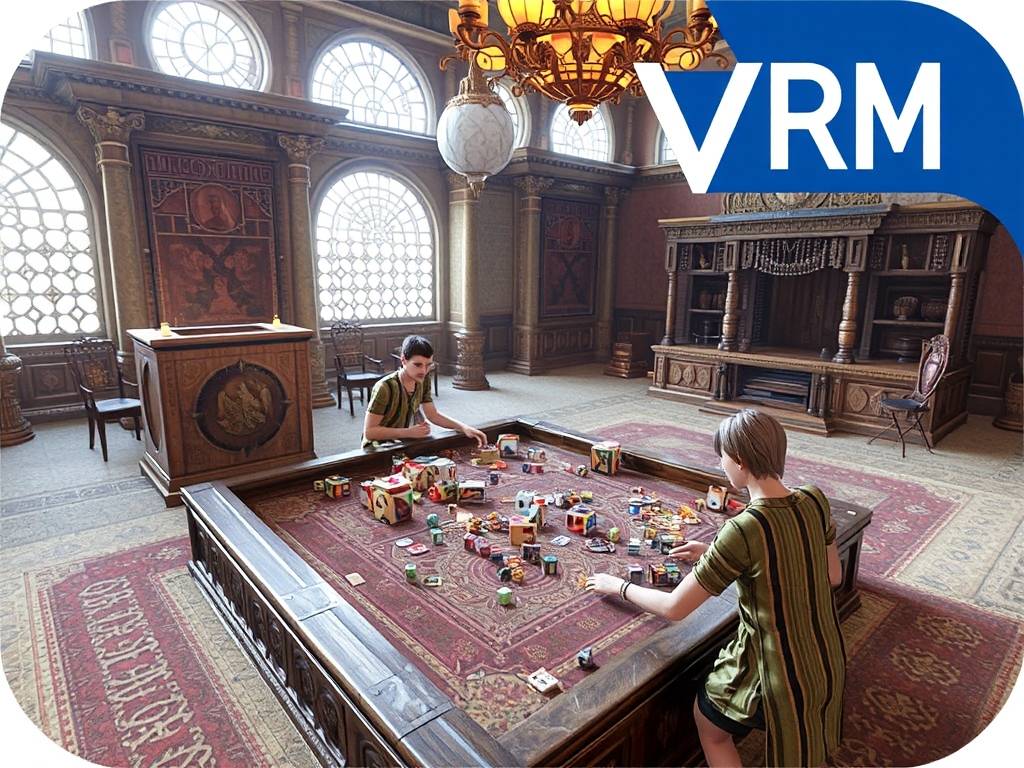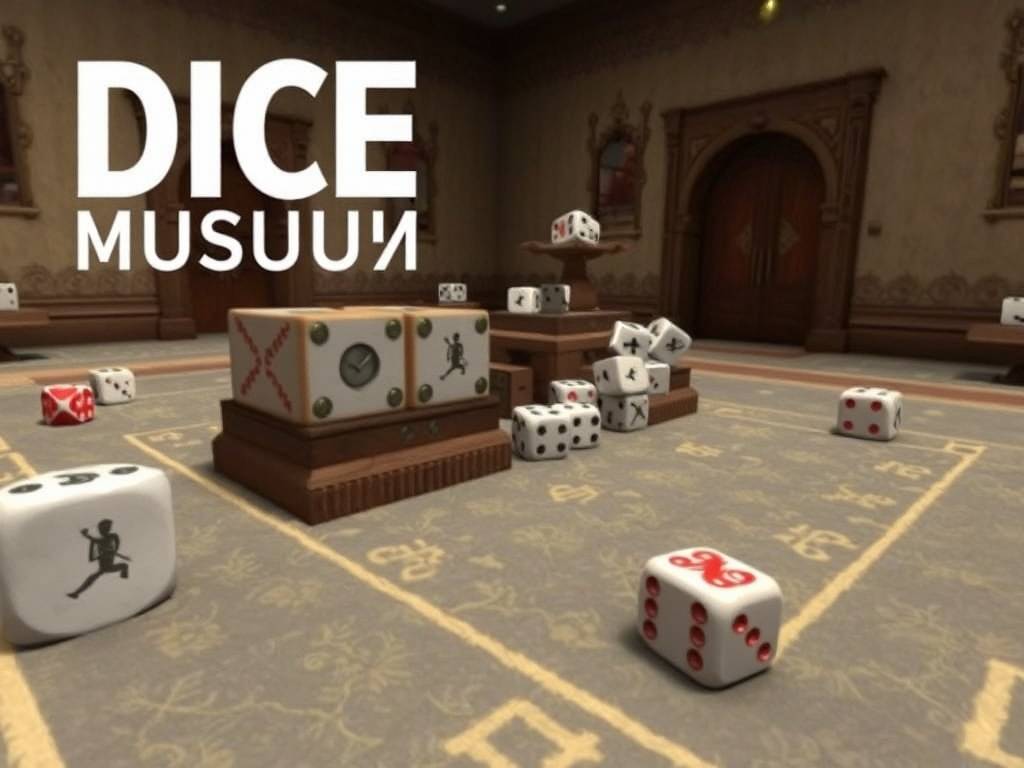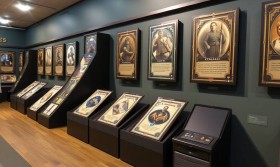Rolling the Dice of Time: An Immersive Journey Inside the Dice Museum VR's Ancient Games Update

Have you ever held a six-sided cube in your hand, felt its reassuring weight, and wondered about its story? We often take dice for granted, seeing them as mere tools for board games or chance. But these small objects are time capsules, carrying within them the echoes of empires, the strategies of forgotten generals, and the simple joys of people who lived millennia ago. What if you could not just learn about this history, but truly experience it? What if you could step into a Roman tavern, pick up a set of authentic astragaloi (knucklebones), and challenge a virtual centurion to a game?
This is no longer a question of "what if." The groundbreaking Dice Museum VR has just launched its most ambitious expansion yet: the Ancient Games Update. This isn't just an addition; it's a transformation. It’s a meticulously crafted portal that dissolves the barriers of time and geography, inviting you to become an active participant in the playthings of the ancient world. For history buffs, gamers, educators, and the perpetually curious, this update fundamentally changes how we interact with our shared past.

So, what exactly awaits you when you don your VR headset and enter the newly expanded halls of the Dice Museum?
Beyond the Glass Case: A Living, Breathing History
Traditional museums, for all their value, often present history at a distance. You see a dusty collection of clay discs or worn bone pieces behind a pane of glass, with a small placard listing their origin and date. The connection is intellectual, but rarely visceral. The Dice Museum VR Ancient Games Update shatters that glass—literally and figuratively. The core philosophy here is experiential archaeology. You don't just look; you touch, throw, and play.
The update introduces several fully realized, interactive environments, each a snapshot of a different ancient civilization. You can find yourself in:
-
A Sun-Drenched Egyptian Temple Yard (c. 2000 BC): The air is hot and dry, carrying the scent of sand and stone. Before you lies a beautifully painted Senet board. You reach out, your virtual hand picking up the casting sticks. You feel a subtle haptic vibration as you toss them, hearing the clatter on the stone floor. This was more than a game for the Egyptians; it was a spiritual journey representing the soul's passage through the underworld. Here, you don't just read about that belief—you engage with the very mechanics that symbolized it.
-
A Bustling Roman Tavern (c. 100 AD): The room is loud with the chatter of patrons and the clinking of clay cups. In a corner, a group of legionaries are hunched over a board, engrossed in a game of Ludus Latrunculorum ("The Game of Mercenaries"). You can pull up a stool, observe their strategies, and even challenge the winner. Nearby, you can practice with Tali, the four-sided knucklebones, learning the complex scoring system that was a favorite form of gambling. This environment brilliantly showcases the social role of ancient dice games, placing them in their authentic, lively context.
-
A Philosophical Greek Stoa (c. 400 BC): Under the shade of a marble colonnade, you can engage in a game of Petteia, a game of military tactics often mentioned by Plato and Homer. The game pieces feel solid, and the grid is etched into the stone bench. The serene environment encourages thoughtful, strategic play, allowing you to appreciate why the Greeks considered such games vital for developing intellect and foresight.
Unlocking the Secrets of Ancient Gameplay
One of the most significant challenges in studying ancient games is that rulebooks rarely survived. Historians and archaeologists have spent decades piecing together probable rules from fragments of texts, artwork, and surviving game sets. The Ancient Games Update tackles this challenge head-on with its innovative "Archaeologist's Notebook."
This in-game tool is your guide to the mysteries of ancient gameplay. As you explore, the notebook updates with historical findings, different scholarly theories on rules, and pictorial evidence. For a game like the Royal Game of Ur, you might have three proposed rule sets. You can switch between them instantly, playing each version to see which feels most balanced or engaging. This feature does more than just teach you how to play; it invites you into the scientific process of discovery. It’s a masterclass in understanding the evolution of board game mechanics and the fascinating, often incomplete, puzzle of historical reconstruction. This directly addresses the user's quest for deep, authentic knowledge, making them a co-investigator in history.
A Powerful Educational Tool for Immersive Learning
For educators and students, the Dice Museum VR's new expansion is nothing short of a revolution. Imagine a history class on the Roman Empire where students don't just memorize dates but actually spend an hour socializing in a virtual Roman tavern, learning about daily life through direct interaction. The engagement factor is immeasurable.
The update includes structured "Learning Quests" that guide users through these ancient environments. A quest might task you with winning a game of Senet using a specific strategy, or identifying different types of dice from various cultures in the museum's main collection. This gamification of ancient history education ensures that knowledge is retained because it is earned through experience and problem-solving. It caters to visual, auditory, and kinesthetic learners alike, making the complex social and cultural history of the ancient world accessible and unforgettable for all ages.
The Future of Cultural Preservation is Interactive
The Dice Museum VR Ancient Games Update is more than a fun tech demo. It represents a bold new direction in digital preservation of ancient artifacts. By creating interactive, playable digital twins of these ancient games, the project ensures that this intangible cultural heritage is not only preserved but kept alive. A physical dice can crumble; a VR experience, backed by rigorous research, can last indefinitely and be shared with anyone, anywhere in the world.
This approach allows for the recreation of lost or fragile ancient board games that could never be handled in the physical world. You can manipulate a priceless, one-of-a-kind object from a Mesopotamian tomb without the fear of causing damage. This democratizes access to history, breaking down the economic and physical barriers that often surround major museum collections.
As you take off the VR headset, the memory of the experience lingers. The weight of the dice, the strategy of the game, the atmosphere of the tavern—these are no longer abstract concepts. They are sensations. The Dice Museum VR has achieved something remarkable: it has made history feel present. It has reminded us that the urge to play, to compete, to strategize, and to leave things to chance is a timeless thread connecting us to the pharaohs, the philosophers, and the legionaries of the past.
The dice have been thrown. The board is set. All that's left is for you to take your turn. Your journey through 5,000 years of gameplay awaits.

















